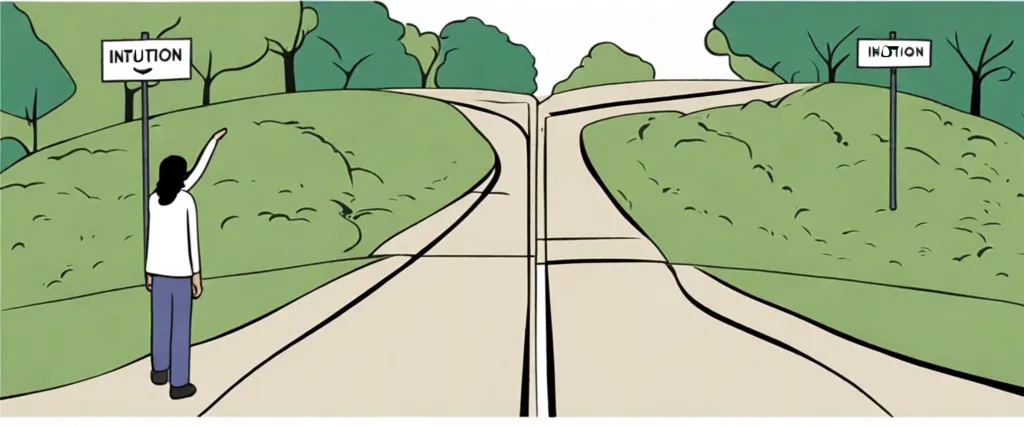
In the realm of behavioral economics, two names stand out prominently – Dan Ariely and Daniel Kahneman. With their groundbreaking contributions to the field, their respective works, “Predictably Irrational” by Dan Ariely and “Noise” by Daniel Kahneman, have captivated readers worldwide. By exploring the complex intricacies of human decision-making, these books shed light on the irrational tendencies we all possess, albeit in different ways. As we embark on this comparative study of “Predictably Irrational” and “Noise,” we will uncover the shared themes, divergent perspectives, and profound insights offered by these two exceptional authors.
Dan Ariely’s “Predictably Irrational” delves deep into the core of human irrationality, forcing readers to question the notion of rational decision-making. Through a series of engaging experiments and anecdotes, Ariely exposes the hidden forces that drive human behavior. From the irrationality surrounding pricing and monetary decisions to the irrational allure of social norms, Ariely compellingly argues that our actions are routinely influenced by irrational biases, often clouding our judgment. By unraveling these irrational tendencies, he provides readers with practical strategies to better navigate the complexities of decision-making in various aspects of our lives.
On the other hand, Daniel Kahneman’s “Noise” explores a different angle of human irrationality, focusing on the innate variability in human judgments. Collaborating with Olivier Sibony and Cass R. Sunstein, Kahneman exposes the profound impact of noise, which refers to the random and unpredictable component that affects decision-making. In contrast to systematic biases examined in “Predictably Irrational,” “Noise” emphasizes the danger of inconsistency and randomness within human judgments, revealing how noise can undermine the reliability and fairness of decision-making in fields as diverse as justice, medicine, and personnel selection. By highlighting the pervasive influence of noise, Kahneman provides valuable insights into how we can reduce the deleterious effects of this irrational element.
Despite their divergent approaches, both Ariely and Kahneman share the vision of unraveling the complexities of human behavior, unmasking the inherent irrationalities that permeate our choices. While Ariely hones in on the systematic biases that shape our actions, Kahneman focuses on the role of inconsistency and randomness in human judgment. Through their respective lenses, they encourage readers to question the illusion of rationality and to understand the profound impact of irrational tendencies on our daily lives.
As we delve deeper into the comparative study of “Predictably Irrational” and “Noise,” we will witness how these two works complement and challenge each other, offering a comprehensive understanding of human behavior that transcends individual perspectives. By examining the shared themes and divergent perspectives between these two seminal books, we will gain new insights into the irrational forces that shape our decision-making processes. Ultimately, this comparative study will shed light on the spectrum of irrationality and guide us towards a more nuanced understanding of our own behavior.
Brief Summary of Two Books
Predictably Irrational by Dan Ariely
Predictably Irrational: The Hidden Forces That Shape Our Decisions, written by behavioral economist Dan Ariely, explores the various ways in which our decision-making is often subjective, emotional, and irrational. Ariely argues that these irrational behaviors are not random, but rather predictable, and influenced by specific factors.
The book begins by challenging the widely accepted assumption that humans are rational beings who consistently make choices to maximize their self-interest. Ariely provides evidence from various experiments and studies to demonstrate that our decision-making is affected by biases, social norms, and emotions, which often lead us to make irrational choices.
Ariely highlights several intriguing cognitive phenomena that influence our decision-making, such as the relativity of options (where our choices are influenced by the presence of other alternatives), the allure of free offers (which often entice us to make irrational decisions), and the power of social norms (which drive us to conform to the behavior of others).
The book explores a range of topics, including the impact of expectations on our perception of value, the influence of price on our perception of quality, and the role of emotions in shaping our decision-making. Ariely also delves into areas such as the irrationality of revenge, the tension between social norms and market norms, and the ways in which our behavior is affected by both our environment and our own self-image.
Throughout the book, Ariely provides a mix of engaging anecdotes, real-life examples, and research findings to illustrate his points. He also delves into the implications of our irrational decision-making for various aspects of life, including personal finance, healthcare, relationships, and the criminal justice system.
Predictably Irrational offers readers valuable insights into why we often make decisions that seem contrary to our own best interests. By understanding the predictable patterns of our irrational behavior, Ariely argues that we can make better choices and design systems that nudge people towards better decision-making. The book challenges the conventional wisdom of rational economic theory and provides a fresh perspective on the complexities of human decision-making.
Noise by Daniel Kahneman
“Noise” by Daniel Kahneman is a book that explores the concept of noise and its impact on our lives, decisions, and society at large. Daniel Kahneman argues that noise, defined as unwanted variability or inconsistency, is often overlooked and underestimated as a source of problems in various domains, including law, medicine, employment, and even personal choices.
The book highlights how noise can negatively affect decision-making processes, leading to errors, biases, and unfair outcomes. Daniel Kahneman emphasizes that noise is distinct from bias and randomness, and its effects can be even more detrimental. He outlines various sources of noise, including individual judgments, group decisions, and organizational processes.
Through extensive research and real-life examples, Daniel Kahneman demonstrates how noise manifests in different contexts and the consequences it can have. He explores ways to reduce noise, such as using algorithms, nudges, and better decision-making strategies.
Furthermore, Daniel Kahneman examines the importance of more consistent decision-making, particularly in legal and governmental systems. He suggests that reducing noise can lead to fairer and more just outcomes. The book also delves into the implications of noise for firms, industries, and public policies, emphasizing the need for greater awareness and understanding of noise in these domains.
In summary, “Noise” offers a comprehensive analysis of the often-overlooked concept of noise and its impact on decision-making processes and societal outcomes. Daniel Kahneman tackles this subject with depth, providing readers with insights, examples, and practical recommendations to minimize noise and improve decision-making across various disciplines.
Comparison between Two Books

Similarities in Decision Making
In “Predictably Irrational” by Dan Ariely and “Noise” by Daniel Kahneman, both authors explore the topic of decision-making and shed light on the similar underlying principles that influence our choices. Despite utilizing different approaches and perspectives, these books converge on several key similarities in their analysis of decision-making processes.
1. Irrationality in decision-making: Both books emphasize how human decision-making is often driven by irrational factors rather than purely rational thinking. They argue that our choices can be influenced by cognitive biases, emotional responses, and external stimuli that lead us to make suboptimal decisions. By examining these irrational tendencies, the authors aim to challenge the traditional economic model that assumes individuals always act in their best rational self-interest.
2. Influence of context and framing: Ariely and Kahneman emphasize the importance of context and framing in decisions. They argue that the way a choice is presented, or the context in which it is made, significantly impacts our perceptions and preferences. Both authors provide examples to illustrate how seemingly unrelated factors (such as price anchoring or the framing of options) can heavily influence our decision-making, sometimes leading us to inconsistent or illogical choices.
3. Biases and heuristics: Another area of convergence is the recognition of cognitive biases and heuristics that often shape decision-making. Ariely and Kahneman highlight various biases, such as loss aversion, anchoring, confirmation bias, and availability heuristic. They depict these biases as mental shortcuts that our brains employ to simplify complex decision processes but can ultimately lead to predictable and systematic errors in judgment.
4. Role of emotions: Both books acknowledge the significant impact emotions have on decision-making. Ariely and Kahneman argue that emotions can override rational thinking and play a key role in determining our choices. They emphasize that understanding emotional responses is crucial for comprehending the underlying reasons behind decision-making biases.
5. Relevance to real-life situations: Both authors aim to bridge the gap between academic research and real-life decision-making. They provide numerous examples from everyday scenarios to demonstrate the applicability of their findings. By dissecting decisions in contexts like personal relationships, healthcare, market behavior, and legal judgments, these books show how irrational tendencies can manifest across various domains.
In sum, “Predictably Irrational” and “Noise” converge in their examination of decision-making by highlighting the impact of irrationality, the role of context and framing, biases and heuristics, emotions, and practical implications. Readers of both books will gain a deeper understanding of the inherent complexities that influence decision-making processes and learn to navigate these challenges more effectively.
Divergences in Decision Making
Predictably Irrational by Dan Ariely and Noise by Daniel Kahneman both delve into the field of behavioral economics and shed light on the various biases and irrationalities that often influence our decision-making processes. While they touch on similar subjects, there are key divergences in the way both authors approach the topic of decision making.
1. Focus on individual behavior vs. institutional noise:
Predictably Irrational primarily focuses on individual behavior and examines how our irrational tendencies often lead to suboptimal decision-making outcomes. Ariely explores various cognitive biases like anchoring, social norms, and the impact of emotional factors on decision making. Conversely, Noise places greater emphasis on decision-making within institutions and explores the concept of noise, which is defined as random variability in judgments that affect decision outcomes. Kahneman, along with his co-authors, investigates how noise affects decision-making within organizations and offers strategies for reducing it.
2. Experimental findings vs. expert opinions:
Ariely’s Predictably Irrational draws heavily on Ariely’s own experiments as well as prior research in the field to uncover the irrational biases that affect our choices. He focuses on evaluating human decision-making heuristics through a series of controlled experiments, often involving participant behavior in controlled settings. On the other hand, Noise by Kahneman and his co-authors heavily relies on analyzing large datasets and drawing upon judgments made by experts in a variety of domains. Rather than conducting experimental investigations, they examine the impact of noise on decision making through the analysis of real-world instances and expert assessments.
3. Practical implications vs. theoretical understanding:
Ariely’s book predominantly aims to provide readers with practical insights into the biases that affect their everyday decision making. He offers tips and strategies to counteract these irrational tendencies and make better choices. In contrast, Noise is more concerned with the theoretical understanding of the phenomenon and its consequences in decision-making contexts. Kahneman and his co-authors primarily focus on identifying the causes and consequences of noise and explore how it impacts decision-making accuracy and fairness, rather than providing direct actionable advice.
In conclusion, Predictably Irrational by Dan Ariely and Noise by Daniel Kahneman approach the topic of decision making from different angles. While Ariely focuses on individual behavior and offers practical strategies to mitigate irrational biases, Kahneman and his co-authors examine the impact of noise in various contexts and propose strategies to reduce its influence on decision-making outcomes within organizations. Both perspectives contribute to our understanding of how irrationality and variability affect the decisions we make, but they differ in terms of their focus, methodology, and intended practical applications.

Conclusion
Both books, Predictably Irrational by Dan Ariely and Noise by Daniel Kahneman, deserve to be read for different reasons.
Predictably Irrational is a book that delves into the ways in which human behavior often defies rationality and logic. Dan Ariely presents a unique perspective on the irrationalities that drive our decision-making, pulling from various experiments and studies. This book helps readers gain insights into their own behaviors and understand why they often make irrational choices. It provides valuable lessons for individuals to make better decisions and avoid common cognitive biases. If you are interested in behavioral economics and psychology, Predictably Irrational is a highly recommended read.
On the other hand, Noise by Daniel Kahneman, along with his co-authors Olivier Sibony and Cass R. Sunstein, focuses on a different aspect of decision-making. The book addresses the concept of “noise,” which refers to unwanted variability in judgments made by different people evaluating the same situation. The authors argue that noise can have significant consequences but is often overlooked, and they explore ways to reduce it. Noise offers insights into how organizations can make fairer and more consistent decisions by recognizing and managing the influence of undesired variability. It is a valuable book for those interested in understanding the impact of noise on decision-making systems.
Ultimately, both books offer unique perspectives and contribute to the understanding of human behavior and decision-making processes. The choice between them depends on your interests and the specific aspects of decision-making you are most curious about.



